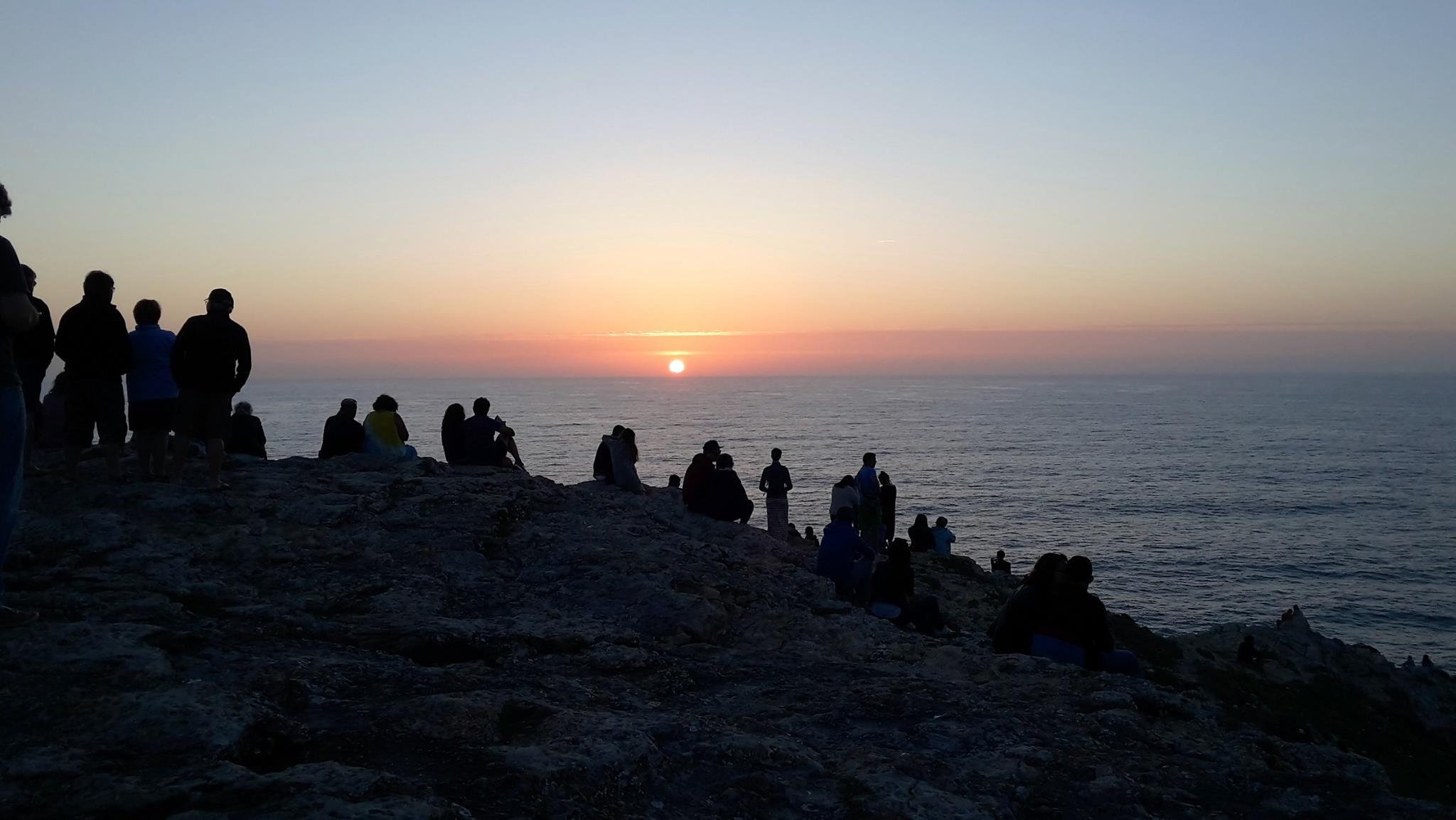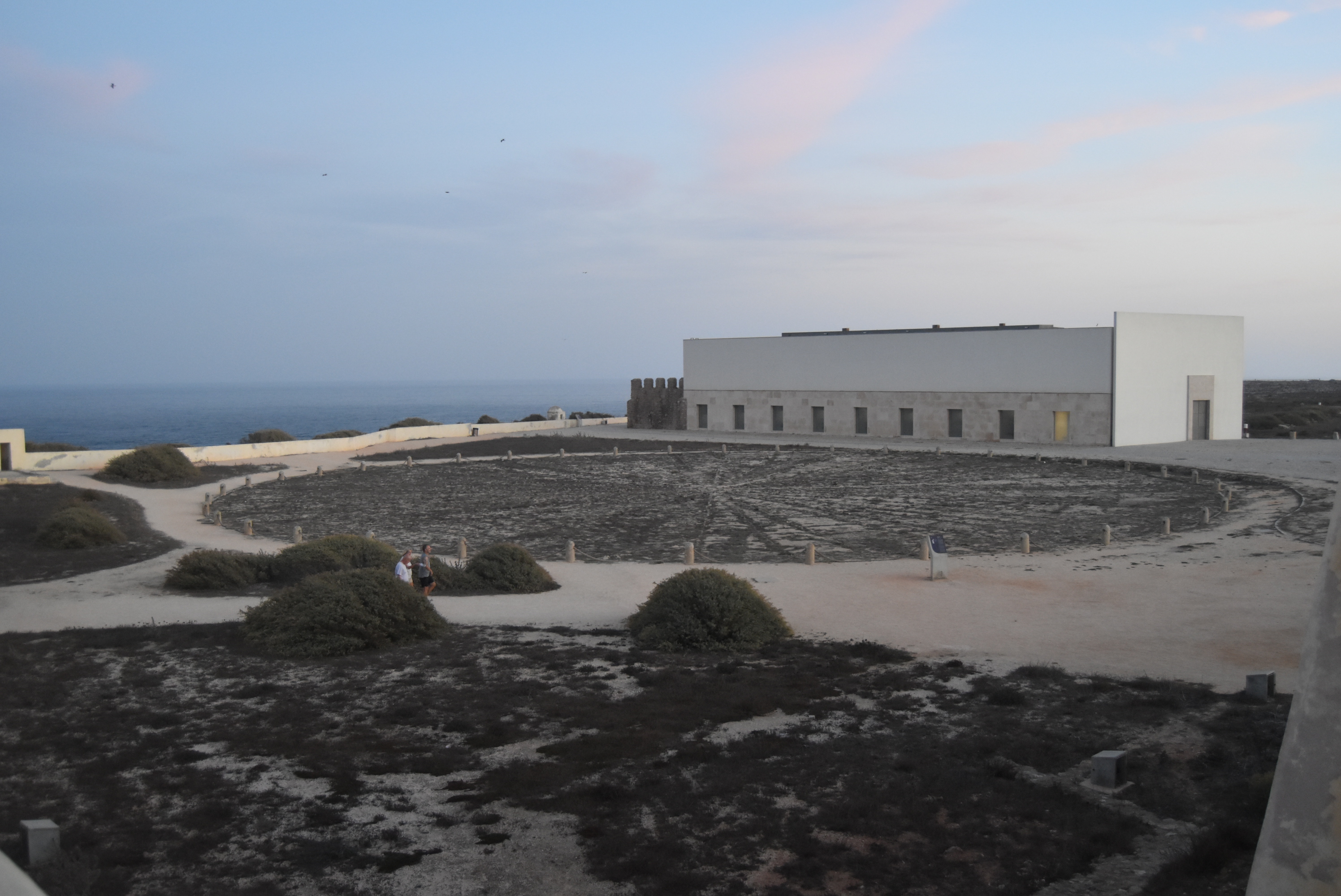Sagres (Vila do Bispo) on:
[Wikipedia]
[Google]
[Amazon]
Sagres is a
Torre de Aspa Viewpoint
 Sagres has a borderline
Sagres has a borderline


civil parish
In England, a civil parish is a type of administrative parish used for local government. It is a territorial designation which is the lowest tier of local government below districts and counties, or their combined form, the unitary authorit ...
in the municipality
A municipality is usually a single administrative division having corporate status and powers of self-government or jurisdiction as granted by national and regional laws to which it is subordinate.
The term ''municipality'' may also mean the ...
of Vila do Bispo
Vila do Bispo () is a municipality (''concelho'') in the Portuguese Algarve. It has 5,717 inhabitants in an area of 179.06 km2.
History
The first references to this region referred to the ''Aldeia do Bispo'' in the 14th century, in a char ...
, in the southern Algarve
The Algarve (, , ; from ) is the southernmost NUTS II region of continental Portugal. It has an area of with 467,495 permanent inhabitants and incorporates 16 municipalities ( ''concelhos'' or ''municípios'' in Portuguese).
The region has it ...
of Portugal
Portugal, officially the Portuguese Republic ( pt, República Portuguesa, links=yes ), is a country whose mainland is located on the Iberian Peninsula of Southwestern Europe, and whose territory also includes the Atlantic archipelagos of th ...
. It has 1,894 inhabitants (2021) in an area of . It is historically connected to the early Portuguese Age of Discovery.
Sagres is near the Western end of the world's longest estimated straight-line path over land, at 11,241 km, ending near Jinjiang in the People's Republic of China.
History
The name Sagres derives from ''Sagrado'' (''holy'') owing to the important local religious practices and rituals that occurred during the pre-history of the nation.Câmara Municipal de Vila do Bispo (2012), p.1 From here some of the Mediterranean peoples (including the Phoenicians, Greeks, Carthaginians and Romans), venerated their divinities and which some believed, owing to the absence of a human settlement, was the gathering place for their gods. Christinas (Mozarabs) that lived in this zone, during the Muslim occupation, erected the Church of Corvo, where the mortal remains of the saint Vincent were deposited in the 8th century. The presence of martyr's remains lead the Portuguese to refer to the site and the peninsula as the Cape of Saint Vincent. The area (mostly Lagos town)is linked to Infante Henry, son of King John I and Philippa of Lancaster. Although born in the provincial city of Porto (1394), he would be connected with his life in the parish, until his death in 1460, being known as the ''Infante of Sagres''. Although there existed a medieval settlement in this area (Terçanabal), all the land was donated on 27 October 1443 to Infante Henry. The prince was head of the military Order of Christ, Duke of Viseu, Master of Covilhã and a man preoccupied with his signeurial holdings and defense of his faith. Henry obtained his wealth from the lands he held the fisheries in the Algarve, and the rights from the gold and slave African trade and invested in the founding of a village (later known as the ''Vila do Infante'') to assist the population. The small fishermen town was situated on the Ponta de Sagres, a strategic point dominated the coves of Mareta and Beliche. Henry's controlled his material interests from Lagos and when he died on 13 November 1460, the Portuguese navigators and other services, had already reached Sierra Leone. Sagres was created in 1519, through the division of the municipality of Vila do Bispo. King Sebastian was known to have spent time in the parish, listening to music along the cliffs and the sea. A chronicle of the 16th century, referred to the young Kings stay at the Convent of São Vicente do Cabo, and later, locals recounted that King was enchanted by the landscape of Sagres. In May 1587, explorer andprivateer
A privateer is a private person or ship that engages in maritime warfare under a commission of war. Since robbery under arms was a common aspect of seaborne trade, until the early 19th century all merchant ships carried arms. A sovereign or deleg ...
Francis Drake
Sir Francis Drake ( – 28 January 1596) was an English explorer, sea captain, privateer, slave trader, naval officer, and politician. Drake is best known for his circumnavigation of the world in a single expedition, from 1577 to 1580 ...
disembarked 800 men who assaulted the fortress of Sagres. After two hours of intense combat, fortifications adjacent to the fortress were destroyed and its artillery was pillaged.
Until 1834, Sagres was an independent municipality.
Geography
Sagres is located in the extreme southwest of continental Europe, and marked by two geomorphological structures: theCape St. Vincent
Cape St. Vincent ( pt, Cabo de São Vicente, ) is a headland in the municipality of Vila do Bispo, in the Algarve, southern Portugal. It is the southwesternmost point of Portugal and of mainland Europe.
History
Cape St. Vincent was already sac ...
and Sagres Point
Sagres Point (', , from the Latin ''Promontorium Sacrum'' ‘Holy Promontory’) is a windswept shelf-like promontory located in the southwest Algarve region of southern Portugal. Only 4 km to the west and 3 km to the north lies Cape ...
, which establish a transition between the eastern coastal and meridional zones. Exposed to the Atlantic Ocean, it is influenced by Mediterranean currents, marked by promontories of high cliffs leading onto a platform that oscillates between (in the north) and . Whether by coastal erosion
Coastal erosion is the loss or displacement of land, or the long-term removal of sediment and rocks along the coastline due to the action of waves, currents, tides, wind-driven water, waterborne ice, or other impacts of storms. The landwar ...
, or the hard rock, its composition influences the relief of the area.
At 157 meters high, Torre de Aspa is a viewpoint on the western side of Vila do Bispo, which offers a panoramic view of Sagres and São Vicente Cape.Climate
 Sagres has a borderline
Sagres has a borderline warm-summer Mediterranean climate
A Mediterranean climate (also called a dry summer temperate climate ''Cs'') is a temperate climate sub-type, generally characterized by warm, dry summers and mild, fairly wet winters; these weather conditions are typically experienced in the ...
(Köppen Köppen is a German surname. Notable people with the surname include:
* Bernd Köppen (born 1951), German pianist and composer
* Carl Köppen (1833-1907), German military advisor in Meiji era Japan
* Edlef Köppen (1893–1939), German author and ...
''Csb''), hot-summer Mediterranean climate
A Mediterranean climate (also called a dry summer temperate climate ''Cs'') is a temperate climate sub-type, generally characterized by warm, dry summers and mild, fairly wet winters; these weather conditions are typically experienced in the ...
(Köppen Köppen is a German surname. Notable people with the surname include:
* Bernd Köppen (born 1951), German pianist and composer
* Carl Köppen (1833-1907), German military advisor in Meiji era Japan
* Edlef Köppen (1893–1939), German author and ...
''Csa'') with mild winters and warm to very warm summers. Temperatures are very moderated year-round, seldom above or below due to the strong upwelling
Upwelling is an physical oceanography, oceanographic phenomenon that involves wind-driven motion of dense, cooler, and usually nutrient-rich water from deep water towards the ocean surface. It replaces the warmer and usually nutrient-depleted ...
this region experiences in the summer. November and December are the wettest months. Similarly to other locations in the Algarve, insolation is high, though with a higher frequency of marine fogs, which boost the average relative humidity to around 80%.
Architecture


Civic
* Fiscal Post of Sagres ( pt, Posto Fiscal de Sagres) * Hotel of Baleeira ( pt, Hotel de Baleeira) *Lighthouse of Ponta de Sagres
The Lighthouse of Ponta de Sagres ( pt, Estação Rádio-Goniométrica/Farolim de Sagres/Farol da Ponta de Sagres), is beacon/lighthouse located along the coastal peninsula of Sagres Point in the civil parish of Sagres, in the Portuguese municip ...
( pt, Estação Rádio-Goniométrica/Farolim de Sagres/Farol da Ponta de Sagres)
* Lighthouse of São Vicente ( pt, Fortaleza do Cabo de São Vicente/Convento do Corvo/Convento de São Vicente do Cabo/Farol de São Vicente)
* Pousada of Sagres ( pt, Pousada de São Vicente/Pousada do Infante/Pousada de Sagres)
Military
* Fort of Nossa Senhora da Buia da Beleeira ( pt, Forte de Nossa Senhora da Guia da Baleeira) * Fort of Santo António de Beliche ( pt, Fortaleza do Belixe (ruínas)/Fortaleza de Santo António do Beliche) * Fortress of Sagres ( pt, Torre e muralhas de Sagres/Fortaleza de Sagres), Henry the Navigator ordered the construction of this fortress to protect the strategic coastal position at Ponta de Sagres, and the coves that sheltered shipping. The church of Santa Maria, consecrated in 1519, to the invocation of ''Nossa Senhora da Graça'' (''Our Lady of Grace'') was constructed at the centre of the site, during the reign of KingManuel I of Portugal
Manuel I (; 31 May 146913 December 1521), known as the Fortunate ( pt, O Venturoso), was King of Portugal from 1495 to 1521. A member of the House of Aviz, Manuel was Duke of Beja and Viseu prior to succeeding his cousin, John II of Portuga ...
.Câmara Municipal de Vila do Bispo (2012), p.2 A valuable gilded altarpiece from the Chapel of Santo António (in the fort of Beliche), and two images of Saint Vincent and Francis of Assisi, from the 17th and 18th century. The fortification was remodeled in the 16th, 17th and 18th century, after various attacks (including an assault by Francis Drake in 1587); its current form dates to 1793.
References
;Notes ;Sources * {{authority control Freguesias of Vila do Bispo